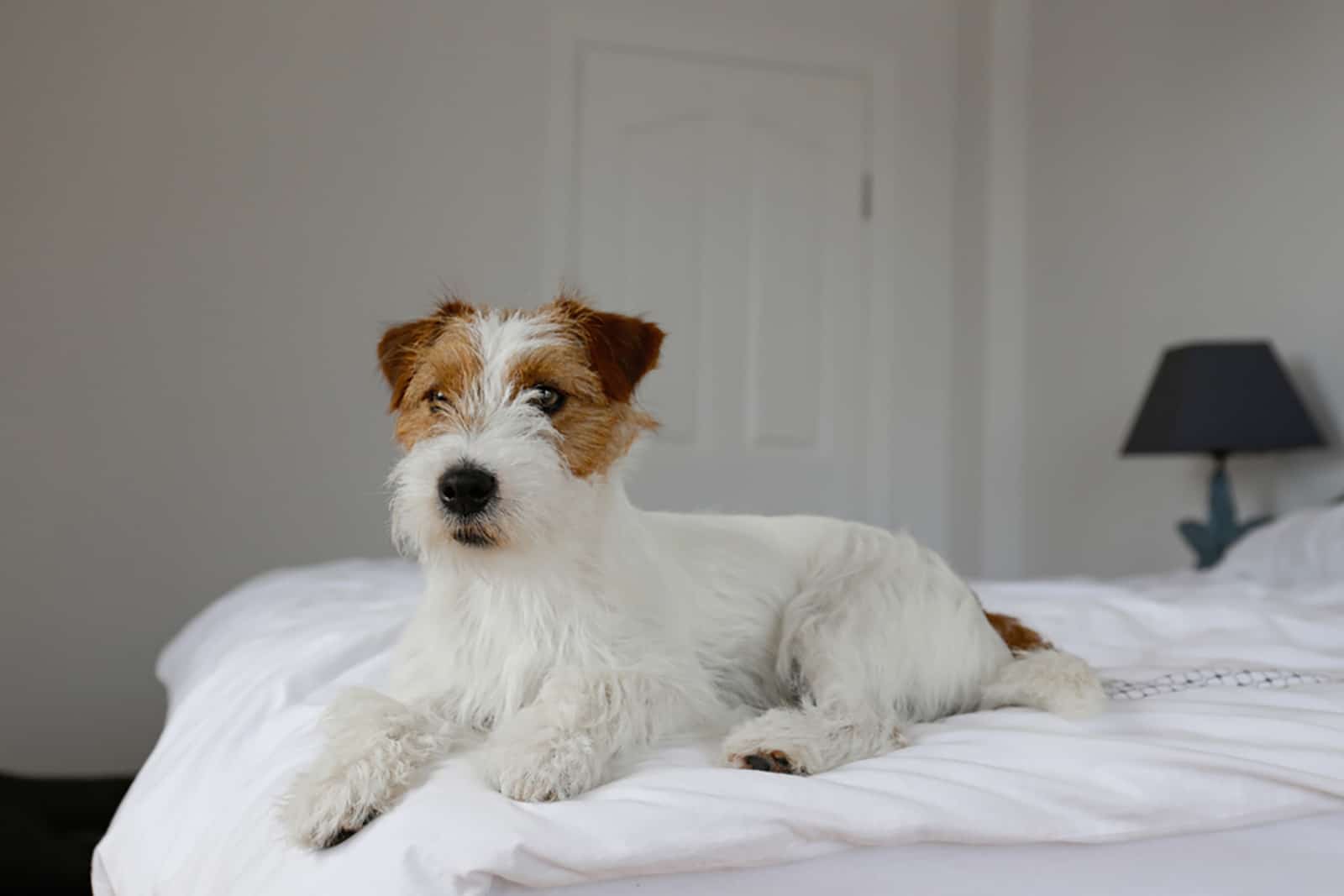When you mention a Jack Russell Terrier, most people know exactly what you’re talking about, and a great deal of them will probably picture “Eddie”, from the TV show, Frasier, in their head.
Every dog lover knows what a Jack Russell Terrier is, but have you ever heard of a long-haired Jack Russell Terrier?
They might sound like something we’ve just made up, but if you’ve ever happened to see one, you’ll know what we’re talking about.
Long-haired or rough-coat Jack Russell Terriers are a special variety of the breed, characterized by a longer, coarser coat. Obviously, that’s where they got their name.
If you are thinking about getting yourself a puppy, but aren’t entirely sure which breed to choose, we’re here to tell you why the long-haired Jack Russell might just be the perfect choice for you.
In this detailed article, we bring you everything you need to know about these lovable balls of fur, including a breakdown of their appearance, temperament, diet, and exercise needs, as well as important points about their health.
If you stick around until the end, you will also find out where you can get a rough-coat Jack Russell for yourself, and how much they cost.
What Is A Long-Haired Jack Russell Terrier?
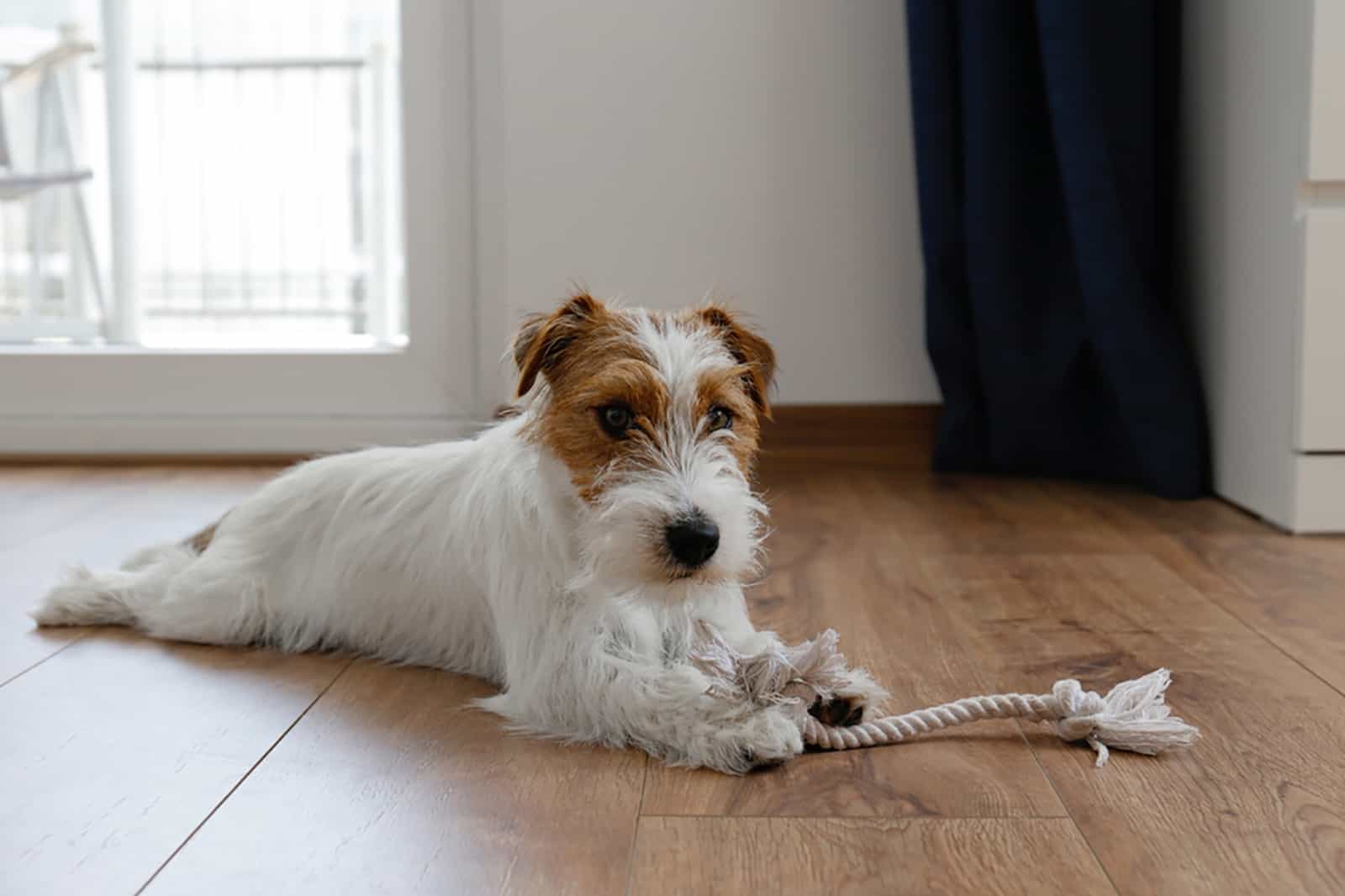
You might think that long-haired Jack Russell Terriers are a separate breed of their own, but the truth is that they’re just one type of the traditional JRT breed.
The breed got its name from the man who first created this breed. His name was John Russell (nicknamed “Jack”), and he was a parson in 19th century southern England.
They are sometimes confused with the Parson Russell Terrier, but that is actually a completely different Terrier dog breed.
Parson Jack Russell Terriers are usually smaller in size, and have an even shorter coat.
With regard to the coat, there are three types of Jack Russells: smooth coat, broken coat, and rough coat. The third one is the one we are interested in.
Long-haired ones can have a smooth coat, but they are most commonly born with a rough coat, which is why they are often referred to as rough-coat Jack Russell Terriers.
The length of their hair distinguishes them from their short-haired relatives, but they are actually pretty similar in their temperament.
They are not a type of Terrier mix, like Bull Terriers or Boston Terriers are, but rather, a purebred JRT themselves.
What Does A Long-Haired Jack Russell Terrier Look Like?
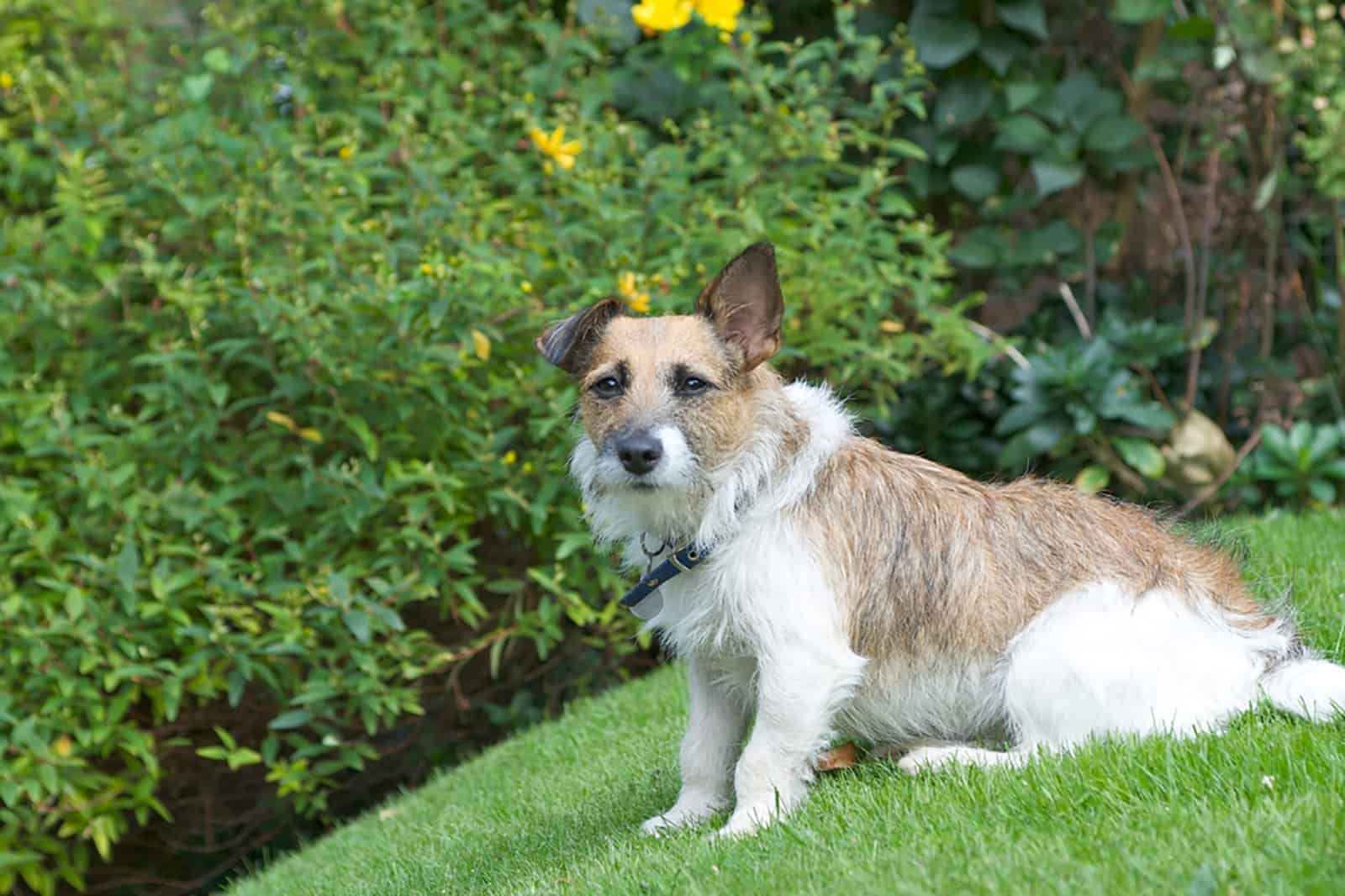
Their appearance is the main thing that separates them from the rest of the JRT breed. In addition to the undercoat that all Jack Russells have, their entire body is covered in a thick, long outer coat.
The outer coat is generally straight, and up to two inches in length. That may not sound like a lot, but when compared to other Jack Russells, the difference is noticeable.
They have a strong jaw and a squarely-built face, with floppy ears and dark, almond-shaped eyes.
Average Weight And Height
There aren’t many differences in size between regular Jack Russell Terriers and long-haired ones. They grow up to be about 10 to 15 inches (25 to 38 cm) tall at the withers, which puts them right in between Corgis and Pitbulls.
Related: Corgi Pitbull Mix: Is This The Best Dog For Your Family?
Their weight usually ranges from 14 to 18 pounds (6 to 8 kg).
Their body is very lean and muscular, which makes them incredibly agile and strong for their size. Not much has changed in their physicality since they were first bred in the 19th century, and this is largely because their habits have remained the same.
They have always been considered to be working dogs, which makes their qualities such as toughness, tenacity, and durability extremely desirable. And, despite their slight frame, Jack Russells have all of those in spades.
Coat Types
Long-haired Jack Russell Terriers have a recognizably longer outer coat, but even within this breed variation, there are a couple of different ways it can grow.
This type of coat can either be smooth or rough, but the latter version is much more prevalent. This is a result of their fur growing in multiple different directions, which sometimes appears like their coat is textured.
For this reason, they are occasionally described as wire-haired.
Coat Colors
Every Jack Russell Terrier’s coat is entirely made up of three different colors: white, black, and tan. However, these three shades can combine into countless combinations and patterns, making every dog in the breed look unique.
White is the base color, usually predominant across the dog’s body, with markings being either black or tan. Occasionally, there can be a brindle pattern.
The number of the various different patterns is even more highlighted in long-haired Jack Russells.
Because of their longer coat and different directions of hair growth, these coat patterns get increasingly more complex and beautiful, often reminiscent of Fox Terriers.
Are Long-Haired Jack Russell Terriers Rare?
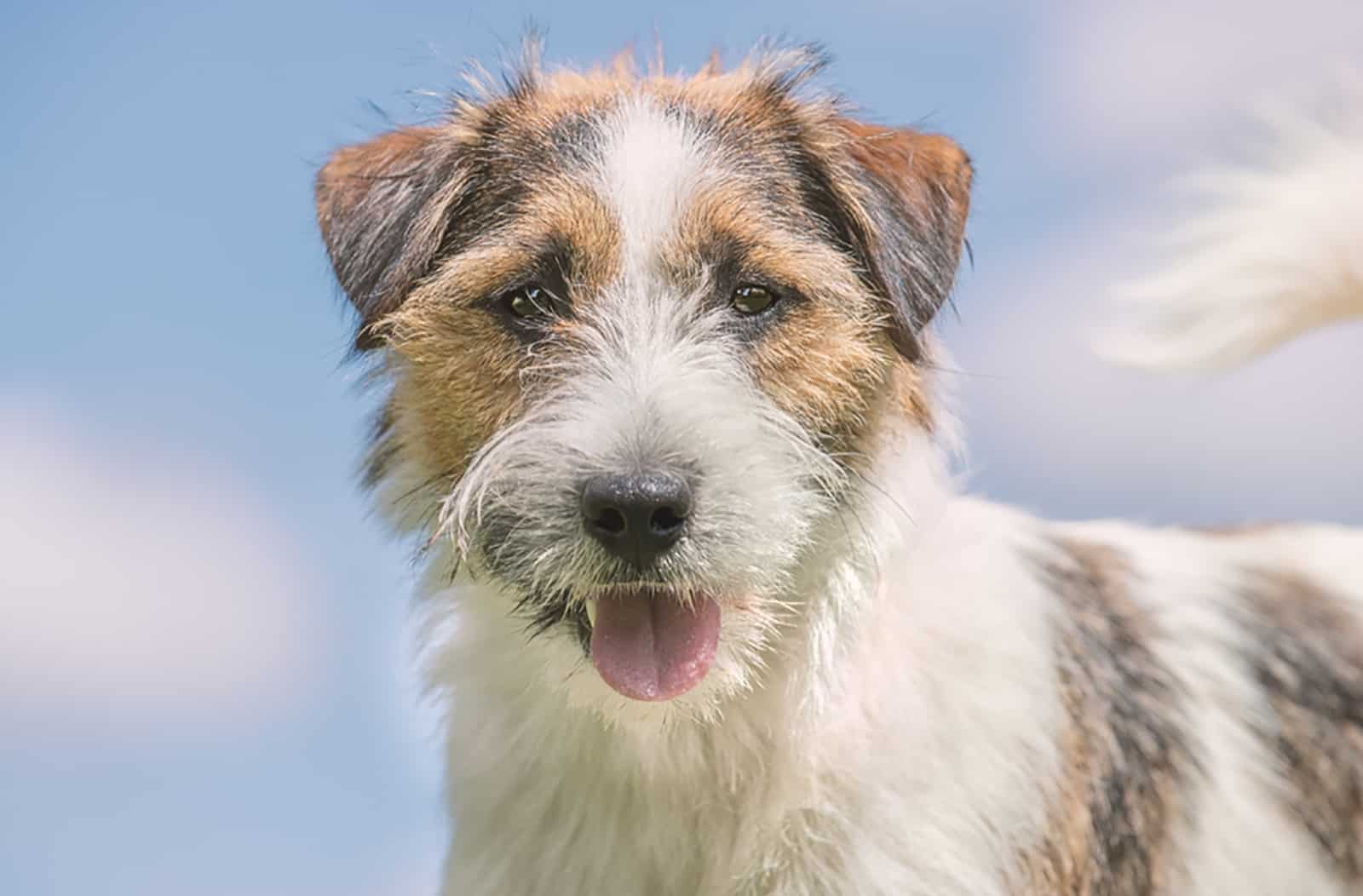
As you might have guessed, the rough-coat variant is one of the least common ones in the Jack Russell Terrier breed. However, they are not as rare as, for example, solid white JRTs.
The short, smooth coat is predominant, and is generally more attractive to dog owners and breeders mainly because it doesn’t require nearly as much grooming as the long one.
Are Long-Haired Jack Russell Terriers Accepted By The American Kennel Club?
In 2001, Jack Russell Terriers as a breed were accepted into the Terrier group of the AKC, as well as the United Kennel Club (UKC) at the request of the Jack Russell Terrier Club of America (JRTCA).
With this, all three coat types — smooth, broken, and rough — were considered to be equally up to the breed standard.
Therefore, the long-haired Jack Russell Terrier is included in the AKC, but as part of a larger breed, and not as a separate type of dog.
Nevertheless, there are certain criteria that a JRT’s coat has to satisfy in order to be considered up to the breed standard. Here are some of the guidelines:
– Has to have both an undercoat and an outer coat
– Has to be weatherproof
– Has to be natural and unaltered
– The belly and underside have to be covered
– Has to be at least 51% white in color
There is no preference given to any coat type.
Long-Haired Jack Russell Terrier Grooming Needs
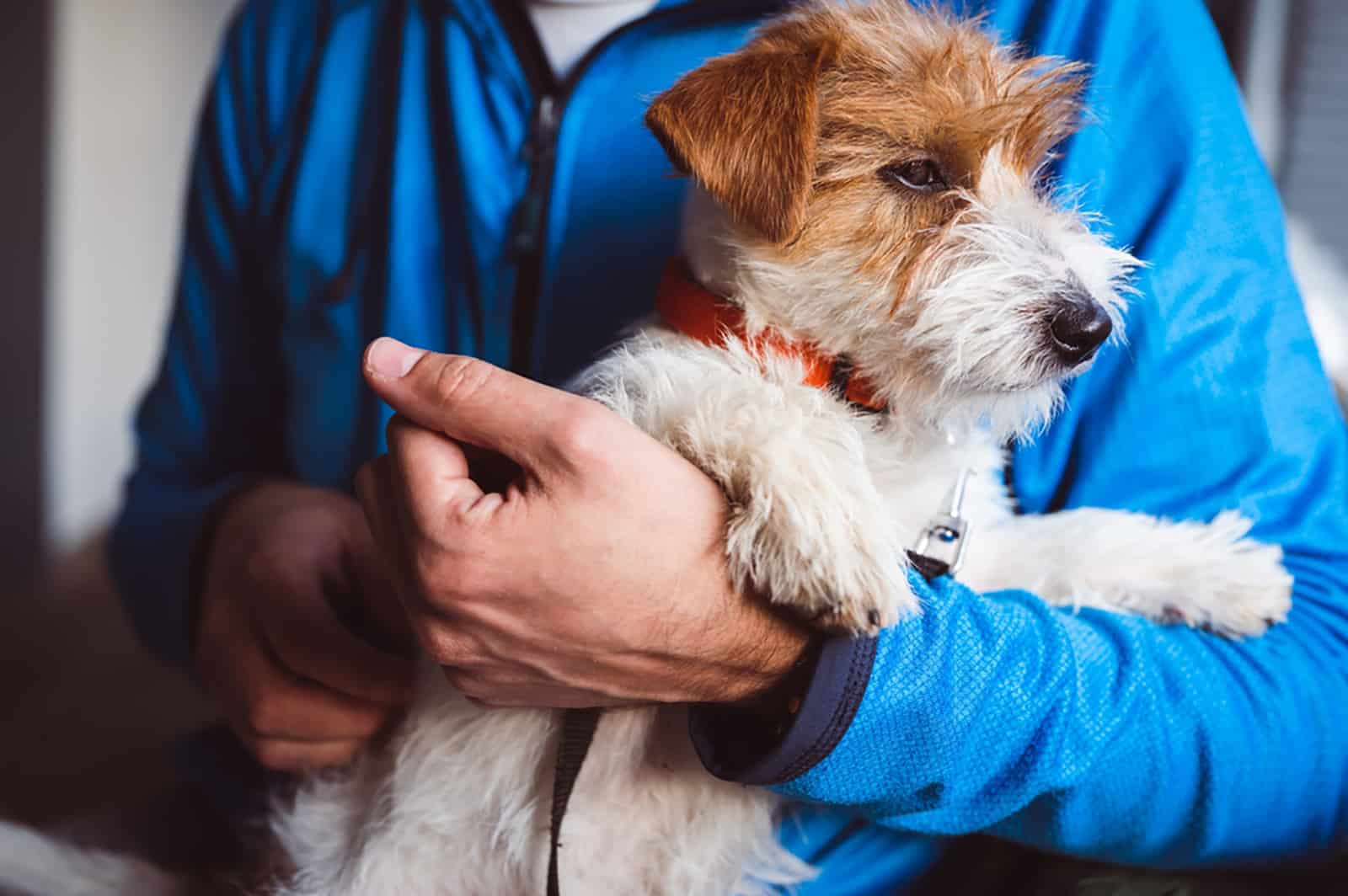
Needless to say, long-haired Jack Russell Terriers have more demanding grooming needs than short-haired dogs.
Not only are they double-coated, but their hair is also longer as well as extremely thick, coarse, and wiry. Because of this, dirt can easily get stuck in there so you need to tend to them quite often.
Let’s get through some of their particular grooming needs, and give you a few tips on how to do it as effectively as possible.
Hair Brushing
Brushing their fur regularly is obviously the number one priority when it comes to maintaining your long-haired Jackie’s coat.
For optimal results, we recommend brushing their coat at least once a week with a wide-toothed comb or brush.
Haircuts
Generally speaking, rough-coat Jackies don’t need a lot of trimming, except maybe for the bits of loose hair around their face. If you choose to do that, make sure to cut only very little pieces of it, preferably by using blunt scissors.
One thing that does need a lot of attention is their undercoat. Dead hair can appear quite often on these dogs, and you should pluck them twice a year.
This can be a tedious process, but it has to be done fully in order to remove all dead hairs and allow new ones to grow.
We recommend that you have a professional groomer do this for your long-haired Jackie as they will be able to spot the dead hair better, and they will be much more detailed in their work.
Another great tip that we have for you is that you do it during the shedding season because the undercoat will be much more visible and accessible.
Bath Time
Bathing is usually a no-no for long-haired Jackies unless it’s absolutely necessary. The chemicals in dog shampoo can soften their hair, often leading to damage or extra unnecessary shedding.
Bathe them only if they’re really dirty, and even then, we suggest you use dry shampoo.
How Much Do Long-haired Jack Russell Terriers Shed?
One important bit of information: The Jack Russell Terrier, no matter what its coat type is, is not a hypoallergenic dog breed.
When compared to all dog breeds, long-haired Jack Russell Terriers are somewhere in the middle of the pack in terms of shedding. It’s basically not an issue for short-haired Jackies, but the long-haired ones will need some tending to.
Make a habit of brushing them more often during the shedding season so that you can remove all possible inconveniences, and as we already said, avoid bathing them in order to reduce the amount of shedding.
How Much Does A Long-Haired Jack Russell Terrier Cost?
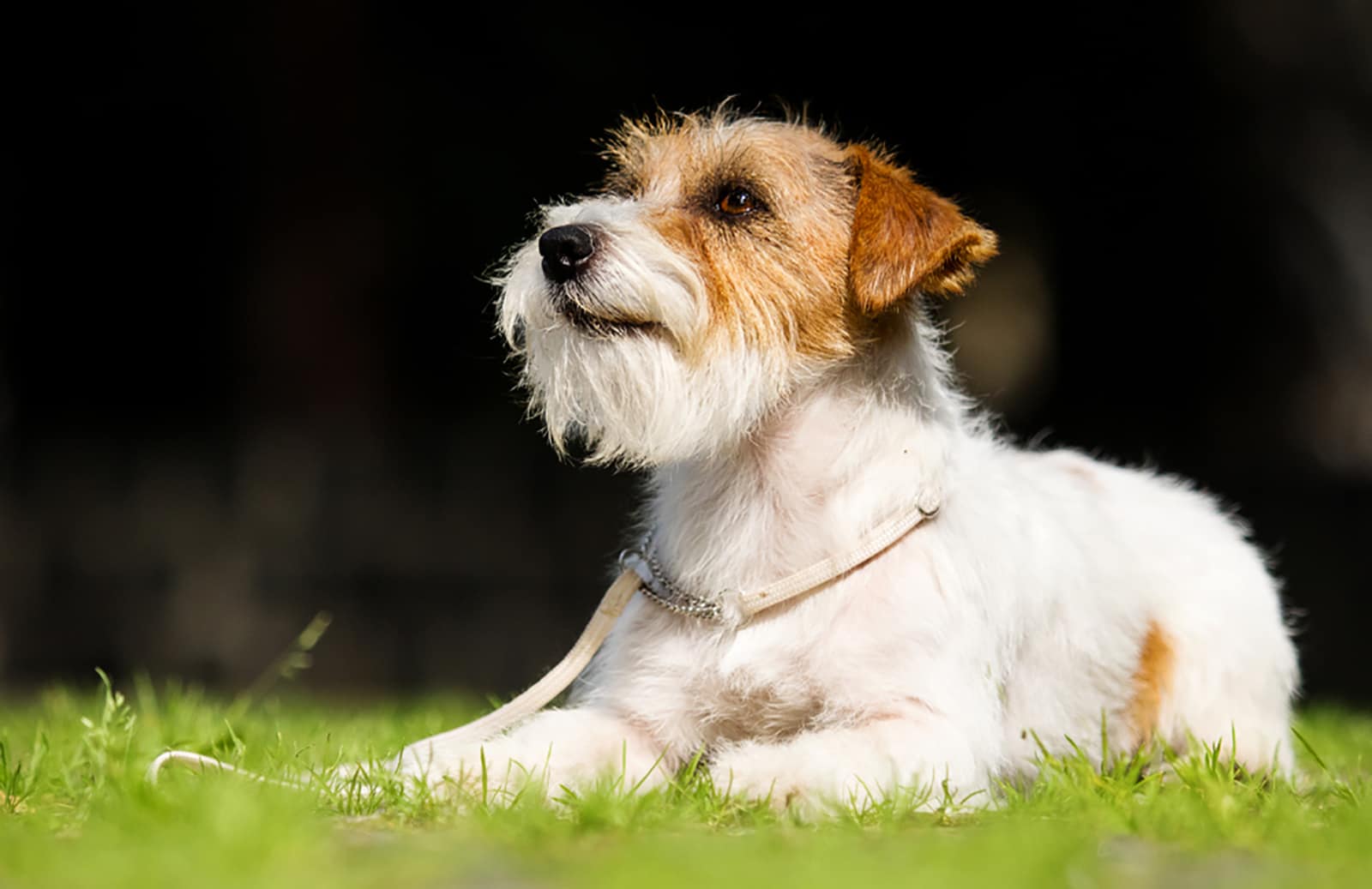
As with any dog, there are variables that affect the price in one way or another when buying a long-haired Jack Russell Terrier. On average, they tend to cost in the region of $800 to $4,500.
The factors that you should consider when determining the price of a Jack Russell Terrier puppy are:
– Pedigree
– Breeder Reputation
– Purity
– Training
Where Can I Get One?
Since long-haired Jack Russell Terriers are fairly uncommon, it can be difficult to find one. They are not very popular in the United States, and not a lot of breeders are actively trying to produce them.
It’s not impossible, but you might have to be prepared to look all over the country to find a reputable breeder with a puppy that has a good pedigree and a clean bill of health.
Read More: 13 Best Jack Russell Breeders In The US
Long-Haired Jack Russell Terrier Personality & Characteristics
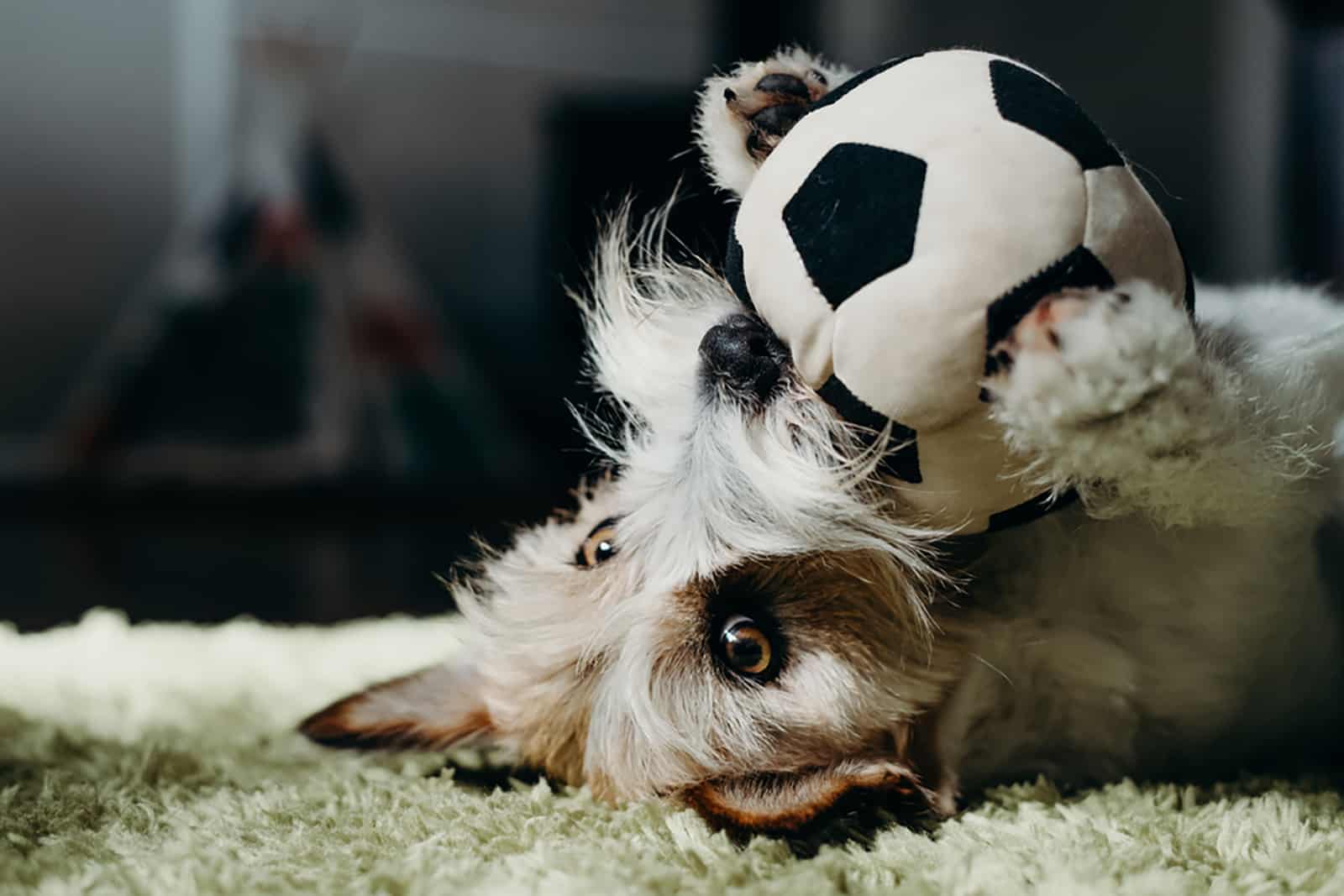
Given that they are considered to be the same breed as regular Jack Russell Terriers, there isn’t really much difference between them when it comes to their behavior and temperament.
In terms of their most common characteristics, they are quite similar, but some traits will be dependent on a particular dog’s bloodline, and the habits of the owner.
Long-haired Jack Russells are extremely smart, loyal, and easily trained, which is one of the things that makes them such popular pets. They’re also a very physical breed, full of energy and always looking to play.
Are They Good Family Dogs?
Long-haired Jack Russell Terriers are great family dogs.
Aside from their high intelligence and the ability to take instructions, they have a keen sense of loyalty and protectiveness that makes them perfect family companions and watchdogs.
They get emotionally attached to their entire family, and don’t usually pick a single favorite as some dog breeds do. They are great around kids and relatively kind towards strangers.
They can sometimes get a bit loud with their barking, but they are a great example of the old “dog who barks, doesn’t bite” aphorism.
One thing you need to have in mind if you plan to get a long-haired JRT for your family is that they are very active dogs.
Because of their history of being working Terriers, they are predisposed to having high energy levels, and you need to be able to keep up.
What Do They Eat?
Even though they are a relatively small dog breed, long-haired Jack Russell Terriers can eat quite a lot of dog food. Because of their high level of physical activity, they need food that is packed with protein.
The best choice is real meat-based protein, coming from chicken, beef, or fish.
When it comes to their average daily intake, adult long-haired JRTs will need around 450 to 600 calories, while puppies under the age of one require more than that — usually 800 to 900 calories is enough to support their development.
However, since they are on the smaller side, make sure to divide their food into two or three daily meals. This way, their stomach won’t get overstuffed, and will have the chance to properly digest all the food.
We recommend mostly giving them high-quality kibble as dry food has a certain texture that helps reduce the buildup of plaque on their teeth.
This kind of buildup can become an issue and cause all sorts of dental problems for small dogs, so it’s best to keep it in check as much as you can.
Foods that you should definitely avoid feeding your JRT include meat by-products, grains, and anything that contains a lot of chemical preservatives. Be sure to always check the nutritional value on the back of the packaging before buying the food.
Food Allergies
Jack Russell Terrier dogs generally have a higher tendency to suffer from allergies than other breeds. The most frequent conditions are skin-related, such as atopic dermatitis.
JRTs that develop this condition will have symptoms, such as dry and itchy red patches on their skin, which will cause them to excessively lick, scratch, or bite the areas. This can often lead to hair loss as well.
Allergens that can affect Jack Russells in this way can come from breathing in pollen, or getting bit by certain bugs, but they can be food-related, too.
For example, if your dog’s diet includes an unusual source of protein, such as venison, that might be the cause of the problem.
In those cases, you should absolutely go to the vet and consult them about creating a hypoallergenic diet for your JRT.
How Much Physical Activity Do They Need?
Rough-coated Jack Russell Terriers fall into the high-energy group of dog breeds, along with Border Collies and Chihuahuas.
During their history, they were bred for fox hunting, and a lot of those traits and habits have been persevered to this day. They love running around, stalking their prey, and digging holes in the ground.
If your family is more of a sedentary type, then this type of dog is probably not going to be a good fit for you. They require a minimum of 90 minutes of stimulation every day, whether that’s playtime, agility exercises, or walks.
If they don’t get enough chances to expend all of their energy, they can get frustrated and restless, which can sometimes lead to aggressive behavior.
Long-Haired Jack Russell Terrier Health Issues
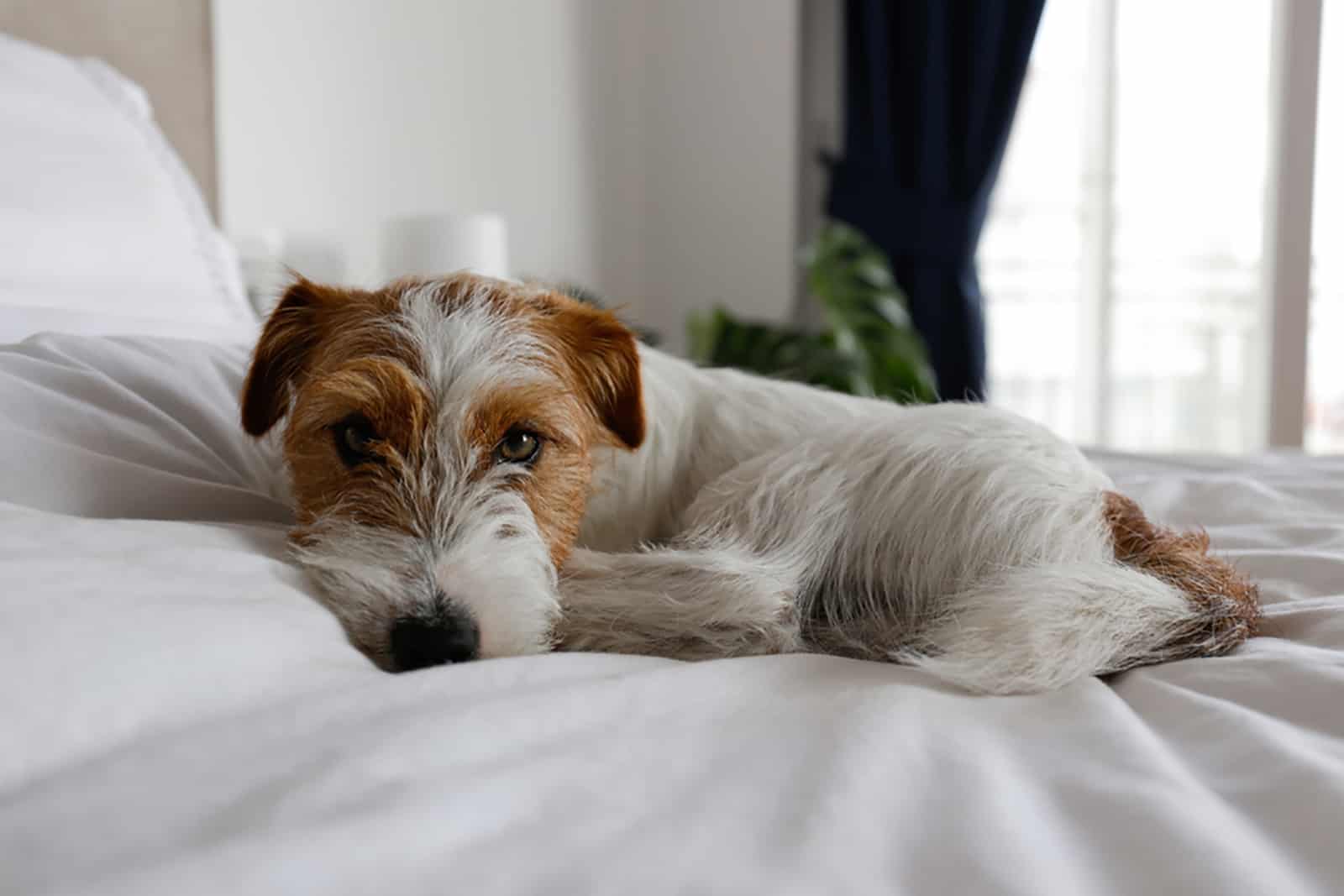
Jack Russells are generally blessed with good overall health, and they aren’t particularly susceptible to any genetically-caused problems.
As we’ve mentioned already, they had the role of hunting dogs historically, which means that they were bred to be sturdy and durable. They are usually more likely to get injured on one of their adventures than they are to fall victim to an illness.
With that being said, there are some health conditions that can affect them, even if it is on rare occasions. We’re going to go through some of them here and describe what they are.
Congenital Myasthenic Syndrome
Congenital Myasthenic Syndrome (CMS) is a genetically transmitted neuromuscular disorder that results in severe muscle weakness and proneness to fatigue.
Unfortunately, it’s an incurable condition, but it’s more common in other breeds, such as Golden Retrievers.
Ear Problems
Issues with ear health in long-haired Jack Russell Terriers can either be genetic or caused by an outside influence.
On some rare occasions, Jack Russell Terrier puppies are born with deafness, which is a condition most often related to white-coat dogs.
They can also experience ear infections, which, if left untreated, can lead to serious consequences and even death.
Eye Problems
Cataracts and lens luxation are two of the most common eye problems that befall dogs, and they are both hereditary in nature.
Lens luxation happens when one or both of the JRT’s natural lenses is out of place and, while it does sound serious at first, it can easily be fixed with surgery.
The same can be said for cataracts, but it’s important that you act as soon as possible in both of these cases.
Legg-Calve-Perthes Disease
This disease is very frequent in small dogs, and it’s essentially a deformity of the hip joint. If it’s not taken care of, it can lead to long-term arthritis.
However, surgery and subsequent rehabilitation have proven to be successful in treating Legg-Calve-Perthes.
Patellar Luxation
Patellar luxation is a term that describes a dog’s leg bones being out of alignment. It most commonly affects the knees, which is where it got its name (patella = kneecap).
While it’s not too common in long-haired Jack Russell Terriers, it can happen sometimes, and you can usually recognize it if your dog starts having a weird gait.
If you spot something like that, be sure to take them to the vet because patellar luxation can be fixed with a relatively simple surgical procedure.
Von Willebrand’s Disease
This disease is caused by a deficiency of the Von Willebrand factor, which is a particular protein in the blood that helps it clot properly when needed.
This results in excessive bleeding when the dog gets an injury and, as you can imagine, it makes any attempt at surgery extremely difficult.
It is a hereditary condition, and it affects all breeds of dogs, as well as some cats.
Dobermans are the most affected breed, with some studies showing that over half of them are living with this condition. It’s not nearly as common in Terriers, especially in long-haired Jack Russells, but there have been cases.
How Long Does A Jack Russell Live?
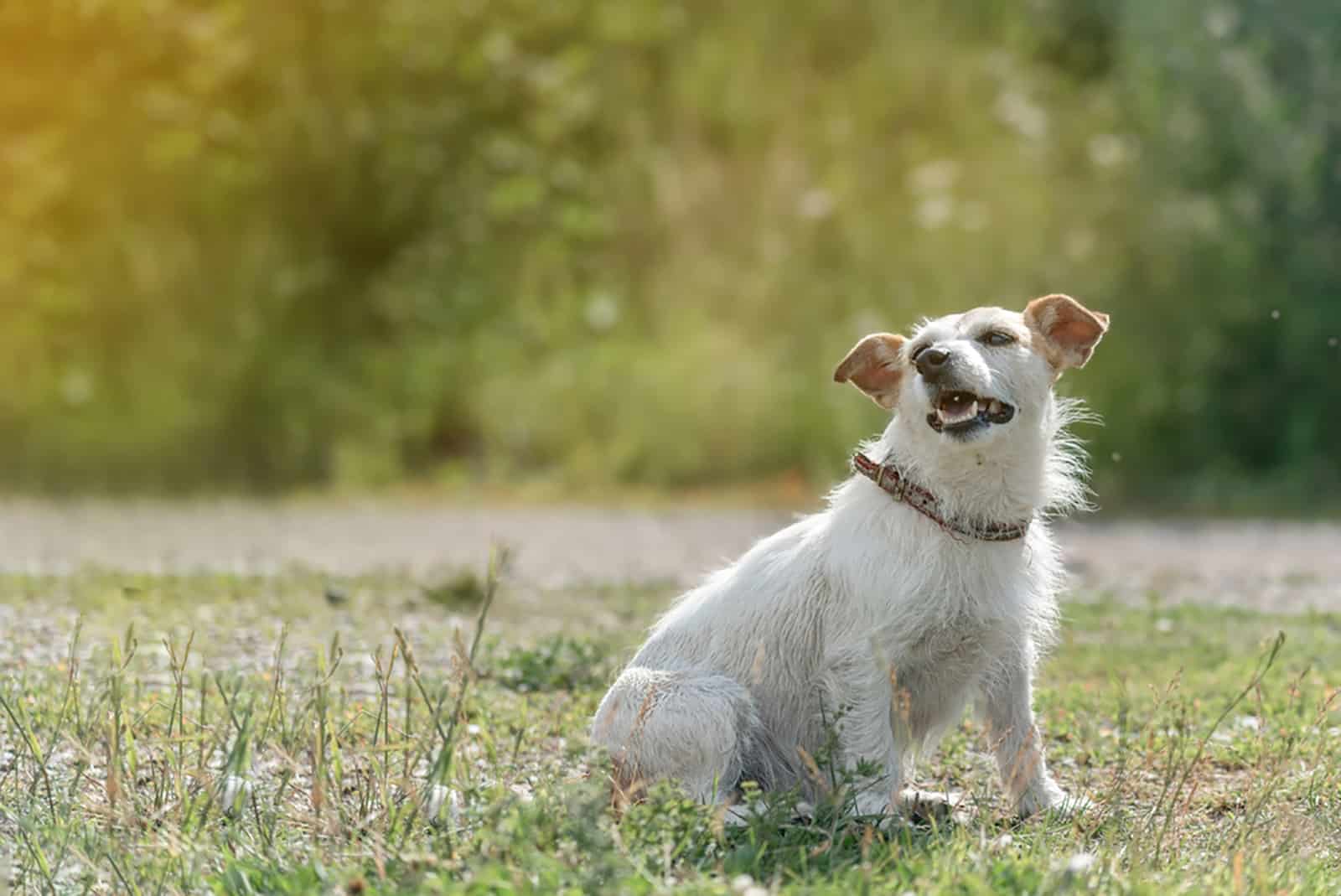
Jack Russell Terriers are one of the longest-living dog breeds in the world. Their average lifespan is between 13 and 18 years, and the oldest Jackie ever recorded was a dog named Willie, who lived to be 20 years old.
On average, they reach adulthood at about 12 months of age, and enter their senior citizen years at 10 to 12 years of age.
Long-haired Jackies have a fortunate genetic makeup and a very active lifestyle, and that combination is usually a recipe for a long and healthy life.
If they are showered with love and attention, put on a carefully-planned feeding regime, and taken out to exercise regularly, these little dogs will most likely live well into their old age.
Conclusion
If you are looking for a cute little pet that will grow close to you and be around for a long time, then the long-haired Jack Russell Terrier could be the perfect dog for you.
They are somewhat rare and hard to find, but if you manage to get your hands on one, you will most definitely not regret it.
Their unique appearance makes them eye-catching companions, and their friendly and playful personality makes them a great addition to any family.
They are very active and high-energy dogs, so they will best fit in with owners who are active themselves. If you have a house with a good-sized back yard, then these little cutie pies will absolutely love it.
With this article, we wanted to give you all of the information about rough-coated Jack Russell Terriers that you might need so that you can be confident and ready to adopt one.
Read Next: Cream Long Haired Dachshund: The Ultimate Dachshund Guide
